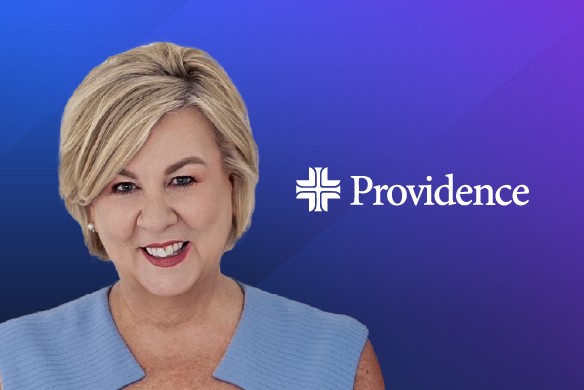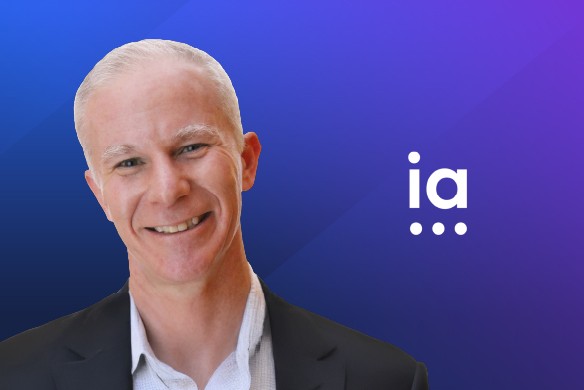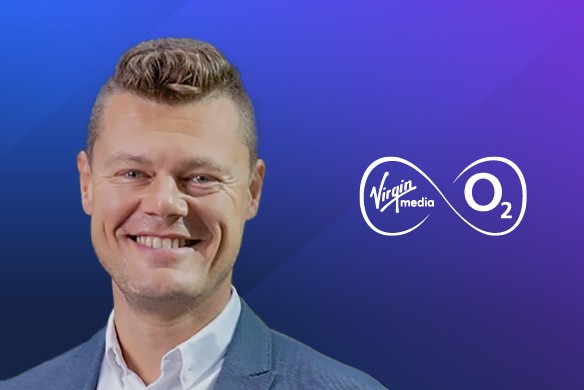If you live and work in the US, you have likely used a product powered by Jack Henry in the past couple of days without even realizing it.
While it may not be a household name, the Kentucky-based organization is publicly traded and has been in business for over 45 years, powering the technology behind the core systems, teller machines and mobile banking apps used by countless financial institutions throughout the United States. At its core, Jack Henry is purpose-driven to promote the human needs central to financial services, advocating for the approximately 7,500 community and regional banks and credit unions that make up its client base and supporting positive change in the communities they serve.
For this episode of The Talent Transformation Podcast, Avature CEO Dimitri Boylan sat down with Rachel Raymond, Director of Talent Acquisition, People Technology and Analytics at Jack Henry.
Humble, astute and refreshingly candid, Raymond shared how she went from being a recruiter without a career plan and with little desire to manage to leading the talent charge at one of the US’s most important fintech enablers.
With her own career a testament to the transformative impact of intentional internal mobility, Raymond offered practical insights on creating an integrated talent management strategy in which the culture that surrounds it is every bit as essential as the technology that supports it.
Discovering the Inner Technologist
Back in the spring of 2020, when much of the world was hunkering down and ‘doing puzzles,’ Rachel Raymond was setting up workflows as part of Jack Henry’s ATS implementation.
We make some eyes widen when we talk about what we were doing prior [to the ATS implementation], watching wheels spin while waiting for resumes to load. We’ve done a pretty significant technology transformation on the talent acquisition side over the last couple of years.”
Rachel Raymond, Director of Talent Acquisition
People Technology and Analytics at Jack Henry
Despite her admission that she can barely update her iPhone, Raymond found she had something of a knack for configuring HR technology. Her senior leadership was sufficiently impressed for the HR technology team to be brought back under her umbrella, placing her at the intersection between HR strategy and technology. From this vantage point, HR leaders can have far greater control over the tools necessary for shaping the delivery of their strategy. Yet, as Raymond and other leaders coming from a non-technical background have found, it can feel uncomfortable dealing with a knowledge deficit regarding something so pivotal to success.
Raymond light-heartedly admitted to feeling “like I’m in over my head at times.” However, in sharing how she overcomes this most relatable of emotions, she exemplifies several key traits of successful managers: an open recognition of the current limits of her knowledge, the curiosity to learn and the ability to trust and therefore empower those who she manages.
I have very good leaders who report to me over each of my function areas and who really keep me in line. I’ll say, ‘I’m going to start talking about this, but feel free to cut me off if I’m saying the wrong thing.’ They’ve got years of experience in their industry and deep knowledge. And so having good leaders is really helpful so that I can navigate more of a high-level strategy, move the roadblocks out of their way and let them do their jobs.”
Rachel Raymond, Director of Talent Acquisition
People Technology and Analytics at Jack Henry
She is equally forthcoming when discussing how managing the technology side of the house has opened her eyes to the difficulties she might have caused when requesting technical changes in the past without formally considering the scope.
The biggest surprise was just, probably on the other side, on the recruiting side […] I didn’t realize how much I was probably driving the tech people crazy when I was making those requests because they were just kind of sporadic… And so I really learned the importance of understanding the scope of what you’re trying to do, the dependencies of what you’re trying to do, the effort [involved]… and, I don’t think I had that full realization until I started managing those.”
Rachel Raymond, Director of Talent Acquisition
People Technology and Analytics at Jack Henry
Comprehending the needs of her technology team has also involved learning to lead a different profile of employees, understanding how they work and refining her managerial approach accordingly: “I think recruiters are good salespeople, right? Like, we’re loud. We talk a lot… And I got to the tech team and they were like, ‘Wait, you want me to turn my camera on?!’”
With strategic HR leaders increasingly keen to take ownership of their technology, it is a timely reminder of the distinct needs of those collaborating with them to make that happen.
Creating the Conditions for Intentional Internal Mobility
Raymond is someone who, by her own admission, stumbled upon a role as a recruiter with little technological expertise and even less inclination to manage. She has since gone on to forge a career from within the same company, consistently placing herself outside of her comfort zone, testing herself, learning new skills and – just as crucially – bringing with her the accumulated skillsets, ideas and experience she has gathered to quietly revolutionize the holistic talent function at Jack Henry.
She could be the poster child for intentional internal mobility, so it was little surprise that this is an area where Raymond had plenty of keen insights to share.
Traditionally, the prevalent view that employees would be willing to wait patiently for their opportunity to advance meant that internal mobility was viewed almost as a ‘nice-to-have’ by many in the HR world. By the time Rachel Raymond and her team sat down in 2021 to assess Jack Henry’s approach to internal mobility, that was no longer the case. Today’s employees are far less inclined to kick their heels while waiting for their chance; instead, they prefer to look outside the company for opportunities to grow their careers.
Knowing how damaging it can be for a company to let good people slip away like this, one of Raymond’s first acts was to revisit the company’s approach and begin to clear the way for talent to thrive within Jack Henry.
We had some really conservative policies around internal mobility, and [employees] could not even apply for positions if they had not been in their role for at least two years. We were losing good talent because they felt stuck. And so we put some business cases together and we changed the policy down to six months.”
Rachel Raymond, Director of Talent Acquisition
People Technology and Analytics at Jack Henry
In little over three years, Jack Henry has seen instances of internal mobility at least double, increasing employee engagement and reducing the burden on recruitment teams to replace outgoing talent.
We went from having a 16 percent internal mobility rate and now we have between 29 and 32 percent. If you take out our entry-level jobs, about 40 percent of our jobs are filled with associates.”
Rachel Raymond, Director of Talent Acquisition
People Technology and Analytics at Jack Henry
Internal Mobility Has to Do More Than Just Keep People Happy
Acknowledging the impressive results, Boylan stressed the need to remain cognizant of the balance between offering mobility opportunities and maintaining the planning and stability required for an organization to function effectively. A successful talent mobility strategy, he was keen to impress, has to focus on more than retaining staff and ‘just keeping people happy’.
Raymond recognized the risks she spoke of, stating that with careful planning and a culture of guiding and encouraging staff, a certain intentionality can be achieved and the gap between the needs of the business and those of the employee bridged.
We’re trying to be intentional and solve business problems with it. Whenever you’re looking at programs, there’s obviously ‘what’s in it for the business?’ but also ‘what’s in it for the employee?’ and we’re trying to kind of merge those more.”
Rachel Raymond, Director of Talent Acquisition
People Technology and Analytics at Jack Henry
The nuance, Raymond believes, is in offering guidance to employees without spoonfeeding them. The motivation to seek out opportunities and grow their own careers in line with their aspirations has to be intrinsic. Once that is there, the business can meet them halfway in identifying training and experience to help them get where they’re going.
We still expect people to manage their career… there is still some onus on those associates to to take the classes, take the job shadowing opportunities, learn from the group, be proactive and manage [their] career. But we’ll give some guidance and some paths that have been really successful for others.”
Rachel Raymond, Director of Talent Acquisition
People Technology and Analytics at Jack Henry
Internal Mobility Must Have an Outward Engagement
Avature CEO Dimitri Boylan sees communicating that the business is open to internal mobility as crucial to its success. Failing to provide this can make the whole venture appear a hollow, box-ticking exercise, stripping it of the transformative impact it can offer.
I see sometimes companies create the internal mobility program and they stop with the internal career site. And many people don’t believe in internal mobility. They say, oh, you know, that doesn’t exist. So I’m not going to go to the site. And the engagement is low [and] you don’t get the impact. But I always say that internal mobility has to have an outward engagement.”
Dimitri Boylan
CEO of Avature
Creating a culture of openness to mobility on the part of managers and the wider business—not only the employee in question—is often easier said than done and occasionally requires gentle encouragement. After all, nobody wants to lose their best team members. Raymond cites one example of how that dialogue between managers and employees can remain open and constructive: incorporating career pathing into performance reviews.
We added our career conversation prompt into performance management so that our associates can add their career aspirations and their manager has to respond. So we know even for those leaders that maybe are hesitant to have those conversations, they are at least doing it twice annually.”
Rachel Raymond, Director of Talent Acquisition
People Technology and Analytics at Jack Henry
Other managers, however, are far more proactive in supporting their employees. Raymond shared a case in point, in which she was happy to assist a member of her team she felt would flourish in a then-vacant role:
I had an associate on maternity leave and a job came up and I called her and I said, “I know you don’t have access to the system right now, but we’ve got to get you access because this is like, this is your job. And she’s thrived in it. And I share that story with people and they say, ‘Wait, you told your employee to apply for another role?’ But it was the right fit. I’m not here to own her career. You know, it’s her career.”
Rachel Raymond
Director of Talent Acquisition, People Technology and Analytics at Jack Henry
Looking Ahead: Consolidating Systems for Actionable Analytics
With the talent management strategy beginning to take shape, Boylan was keen to know where Raymond intends to focus next.
Like most companies, Jack Henry is exploring how it can get a better understanding of AI, both as a tool to be harnessed and as a context to be navigated.
We really kind of democratized AI, in the sense of ‘here are some tools and see what you can do.’ We’re starting to look at specific roles in the company and coming up with profiles to see how you can leverage AI for your standard worker. Some people think, ‘AI is not going to do anything for my job.’ But, ‘here are the ways it can.’ And so helping with writing prompts and presentations and understanding your data.”
Rachel Raymond, Director of Talent Acquisition
People Technology and Analytics at Jack Henry
In line with its people-centric ethos, Jack Henry has conducted a survey of its associates to gauge their sentiments around AI, with a spectrum of responses ranging from indifference or fear to those who see huge opportunities and are keen to upskill.
As with 76 percent of the respondents of Avature’s recent survey, Jack Henry is making a fully integrated skills strategy a top priority.
Raymond says it is still early days in many respects, with her analysts often working across multiple applications to identify the specific needs of each before bringing in the right technology partners. Boylan remarked that it’s a common issue for companies looking to adopt skills across the talent function while working between three or four different systems. The lack of a master ontology to act as a single source of truth commonly leads to impedance between the systems.
It is not just the holistic skills strategy that requires a connecting of the dots. Raymond’s vision extends to eventually braiding together the disparate strands that comprise the wider talent function.
I think the human resources space is so intertwined, so we’re trying to start correlating a lot of dependencies. So, how does learning impact internal mobility? And then internal ability [impact] employee engagement? And how does compa ratio potentially impact these things?”
Rachel Raymond, Director of Talent Acquisition
People Technology and Analytics at Jack Henry
To gain a more complete picture of this complex interrelationality, Raymond acknowledges that a number of practical difficulties must first be overcome; foremost among them is the need for data consolidation. As anyone who has embarked on a digital transformation will attest, that is often easier said than done.
A few weeks ago, I asked, ‘Does anyone have a full picture of all the data we have, all of our data sources where we’re pulling it from collectively as an HR team?’ and I put the list of data sources in front of everyone and people were like, ‘Oh, wow. That’s a lot of places.’”
Rachel Raymond, Director of Talent Acquisition
People Technology and Analytics at Jack Henry
With Jack Henry’s digital transformation very much underway, Raymond will need to strike balance the immediate business needs of the company with the longer-term benefits of a joined-up approach. She was clear-eyed that this will likely involve making do with legacy systems in the meantime and even possibly introducing intermediate solutions to bridge gaps until the new vision can be brought into being.
“It’s going to be a multi-year journey,” she acknowledged, with the assurance of someone who expects as much fulfillment in making that journey as in reaching the destination.


